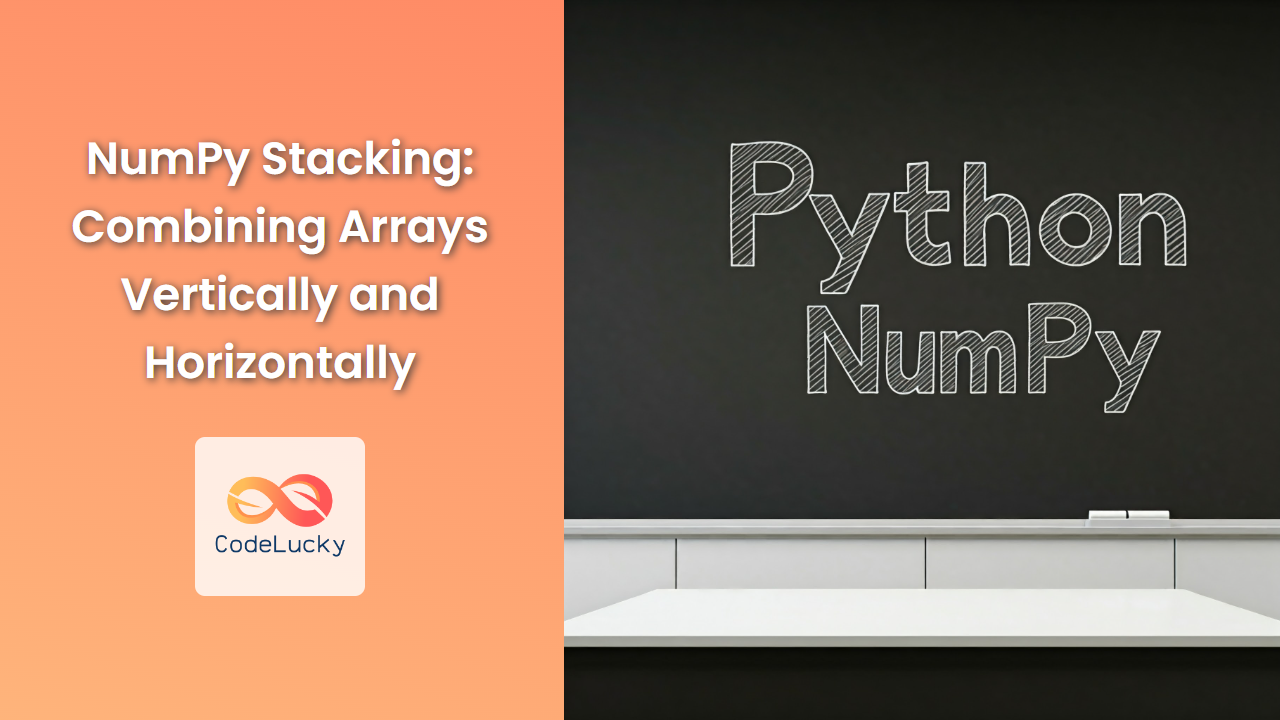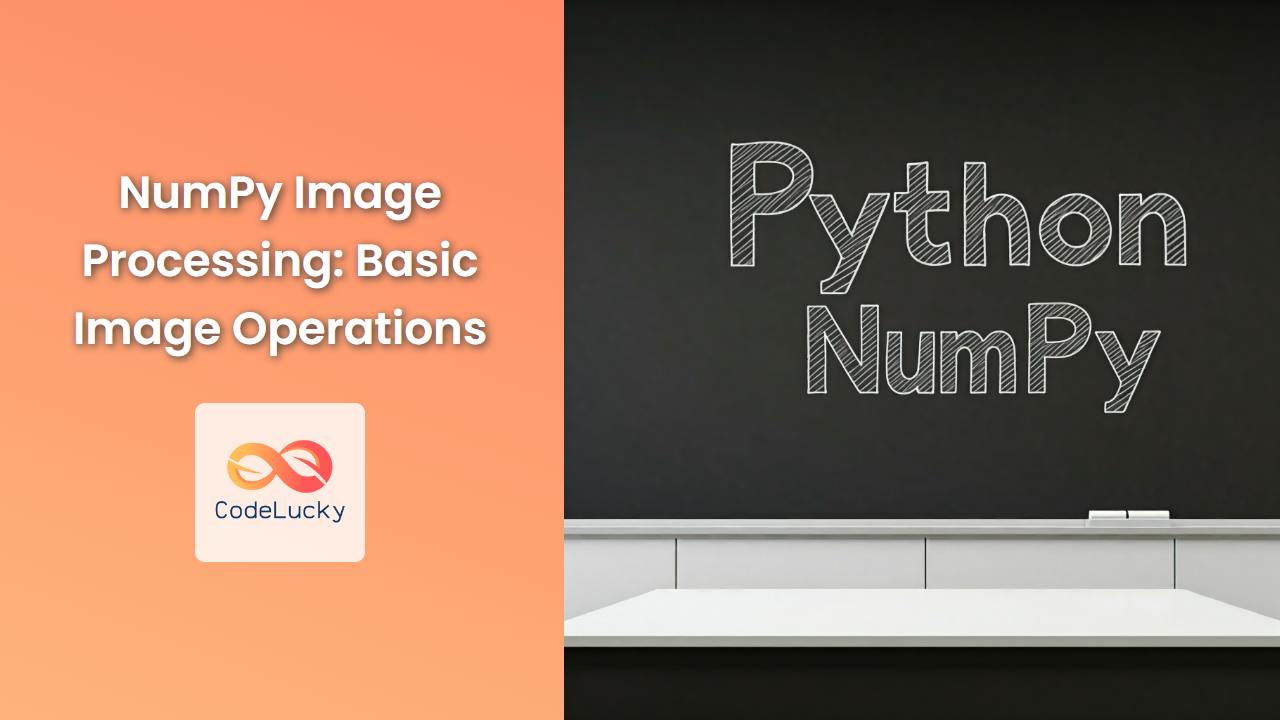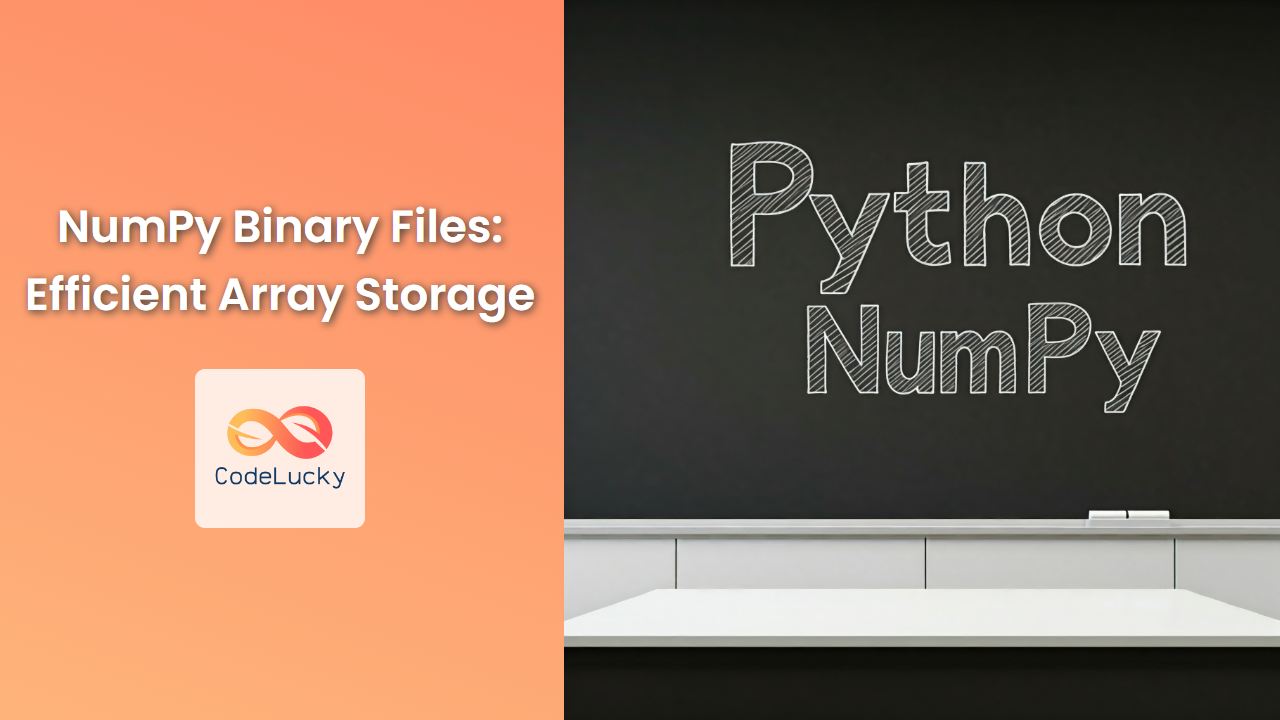NumPy's stacking functions provide powerful tools for combining arrays into larger structures, enabling efficient operations on multidimensional data. This article explores vstack, hstack, dstack, and column_stack, demonstrating their usage, nuances, and practical applications.
NumPy's Stacking Functions: A Powerful Toolset
NumPy's stacking functions offer a streamlined approach to combining arrays along specific axes, significantly enhancing data manipulation capabilities. Let's delve into each function in detail:
1. vstack: Vertical Stacking
The vstack function stacks arrays vertically, meaning it adds them row-wise. This is particularly useful when you need to create a larger array by joining arrays with compatible column dimensions.
Syntax:
numpy.vstack(tup)
tup: A sequence of arrays to be stacked vertically.
Return Value:
A new array with the stacked arrays arranged along the first axis (rows).
Example:
import numpy as np
arr1 = np.array([1, 2, 3])
arr2 = np.array([4, 5, 6])
arr3 = np.array([7, 8, 9])
stacked_array = np.vstack((arr1, arr2, arr3))
print(stacked_array)
Output:
[[1 2 3]
[4 5 6]
[7 8 9]]
Pitfalls:
- The arrays passed to
vstackmust have the same number of columns. - If arrays are not compatible in shape,
vstackwill raise aValueError.
Use Cases:
- Combining multiple datasets with the same features (columns) but different samples (rows).
- Building larger matrices from smaller blocks.
2. hstack: Horizontal Stacking
The hstack function stacks arrays horizontally, effectively adding them column-wise. This function proves invaluable when combining arrays with compatible row dimensions.
Syntax:
numpy.hstack(tup)
tup: A sequence of arrays to be stacked horizontally.
Return Value:
A new array with the stacked arrays arranged along the second axis (columns).
Example:
import numpy as np
arr1 = np.array([1, 2, 3])
arr2 = np.array([4, 5, 6])
arr3 = np.array([7, 8, 9])
stacked_array = np.hstack((arr1, arr2, arr3))
print(stacked_array)
Output:
[1 2 3 4 5 6 7 8 9]
Pitfalls:
- The arrays passed to
hstackmust have the same number of rows. - If arrays are not compatible in shape,
hstackwill raise aValueError.
Use Cases:
- Joining different sets of features (columns) for the same samples (rows).
- Concatenating matrices side-by-side to form a larger matrix.
3. dstack: Depth Stacking
The dstack function stacks arrays along a new third axis, often referred to as the "depth" axis. It's particularly useful when you want to combine arrays with matching row and column dimensions.
Syntax:
numpy.dstack(tup)
tup: A sequence of arrays to be stacked along the third axis.
Return Value:
A new array with the stacked arrays arranged along the third axis.
Example:
import numpy as np
arr1 = np.array([[1, 2], [3, 4]])
arr2 = np.array([[5, 6], [7, 8]])
stacked_array = np.dstack((arr1, arr2))
print(stacked_array)
Output:
[[[1 5]
[2 6]]
[[3 7]
[4 8]]]
Pitfalls:
- The arrays passed to
dstackmust have the same number of rows and columns. - If arrays are not compatible in shape,
dstackwill raise aValueError.
Use Cases:
- Combining different image channels (e.g., red, green, blue) into a single image.
- Representing 3D data by stacking multiple 2D slices.
4. column_stack: Column-wise Stacking
The column_stack function stacks 1D arrays as columns into a 2D array. It's similar to hstack for 1D arrays, but it handles them as columns instead of rows.
Syntax:
numpy.column_stack(tup)
tup: A sequence of 1D arrays to be stacked as columns.
Return Value:
A 2D array with the stacked arrays forming columns.
Example:
import numpy as np
arr1 = np.array([1, 2, 3])
arr2 = np.array([4, 5, 6])
stacked_array = np.column_stack((arr1, arr2))
print(stacked_array)
Output:
[[1 4]
[2 5]
[3 6]]
Pitfalls:
- The arrays passed to
column_stackmust all be 1D. - If arrays are not 1D,
column_stackwill raise aValueError.
Use Cases:
- Creating 2D arrays from multiple sets of measurements.
- Combining data from different sources with a shared index.
Performance Considerations
NumPy's stacking functions are optimized for speed and efficiency. They leverage NumPy's internal memory management and vectorization capabilities, making them significantly faster than manual concatenation techniques.
Conclusion
NumPy's stacking functions offer a versatile and efficient way to combine arrays into larger structures. Understanding these functions empowers you to manipulate multidimensional data effectively, whether you're working with scientific datasets, images, or other complex numerical structures. By mastering these techniques, you can unlock the full potential of NumPy for your data analysis and scientific computing tasks.



















